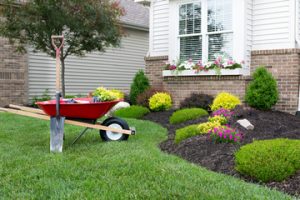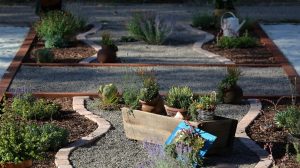Landscape Designers Honolulu HI are experts in the art of creating beautiful and functional outdoor spaces. They use their knowledge of horticulture, design principles and environmental sustainability to create unique and inspiring gardens that reflect the client’s style and harmonize with nature.

They begin each project with a consultation to learn about the client’s vision and budget. They then conduct a thorough site analysis and develop a conceptual design.
When landscape design is used to amplify the qualities of a building and make its presence felt in the surrounding environment, it creates harmony, tells a story and enhances experiences. It is the bridge between architecture and its surroundings, transforming buildings into immersive environments that resonate with every visitor.
Whether a pathway leading visitors into a meditation center or an expansive plaza framing a museum entrance, landscape architecture is a powerful form of visual dialogue that anchors the building within its context. Moreover, it can convey deeper cultural meanings through the selection of plants and their spatial arrangement. In a Japanese tea garden, for example, each carefully placed rock and plant tells a distinct narrative about tranquility, balance and mindfulness.
This approach challenges the dominant solutionist tendencies in modern landscape infrastructure by exploring alternative framings for living with water. It does so by highlighting the forces that shape a landscape’s trajectory and exposing pathways by which divergent futures might come to be, rather than by offering an outright answer. The work of practitioners like Anuradha Mathur and Dilip da Cunha, for example, illustrates this point by criticizing the representational choices that frame coastal situations in Norfolk and along the Mississippi River. By doing so, they expose the ways in which solutions can be framed as problems. They also suggest that a more comprehensive approach to landscape design is necessary, including the consideration of ecological benefits as well as aesthetic ones.
Line
The most basic landscape design principle, line creates patterns, develops spaces, creates forms and controls movement in a garden. It can be a simple edge between two materials, the outline or silhouette of a plant form, or a long linear feature such as a path or fence.
Line can have a formal or informal character, and it can make a space feel larger or more expansive by moving the eye across the ground plane. Straight lines are structural and forceful, often associated with a symmetrical design, while diagonal lines help direct the eye to focal points. Curved lines are more natural and relaxed, creating a sense of whimsy in the landscape.
Landscape designers work on a unique canvas, one that changes continually as plants grow and environmental conditions change. To ensure the integrity of a garden, landscape designs should consider how these variables will affect the landscape over time.
The enduring characteristics of the landscape include shape, form and texture, as well as the ability to connect spaces with focal points that capture attention and guide the eye. These are achieved through the use of color, a variety of textures and lines, contrasting shapes, sizes and textures and repetition. This ensures the overall quality of the landscape and ties everything together into a cohesive whole. The result is a landscape that will look great season after season.
Form
While some debate whether function or form should be a priority, the most successful landscapes embrace both. Functional aspects like sustainability and accessibility should always be at the forefront of any design, but these projects also strive to connect with people on an emotional level, eliciting a strong response that enhances the overall experience.
A key tool for this is scale and proportion. Whether it’s a carefully-placed tree or a garden bed, the right size helps a space feel proportional and legible. This creates a sense of order and clarity that makes the open elements easy to navigate. Using a variety of textures and shapes also adds dimension to a landscape, resulting in a more dynamic composition that feels natural and organic.
Another aspect of landscape is texture, which is felt primarily through touch but can also be apprehended through sight. Surfaces vary from smooth to rough, while plant cover varies from fine grasses and ivy to coarser clods of dirt or brush. Different materials add a tactile quality to the landscape, from the smooth glass of a museum façade to the rough concrete of a park bench.
A well-designed landscape elevates the architecture it frames, framing stunning views and inviting visitors to explore a curated environment. For example, a modern skyscraper might feel cold and imposing until the addition of gardens and tree-lined plazas humanize its scale and make it more approachable. A Japanese tea garden, meanwhile, uses paths and water features to tell a cultural story that speaks to themes of harmony, mindfulness and tranquility.
Texture
While shape and color may get more attention, landscapers also focus on texture, which can elevate a garden from ordinary to extraordinary. Texture refers to the surface characteristics of plant foliage and how they interact with light and shadow. Plants come in a variety of textures: fine, medium, and coarse, and each has its own unique appearance that can add visual interest to a planting design.
For example, a densely branched needle-leaved shrub, like juniper or Japanese yew, produces a very fine texture, whereas open-branching species such as honey locust and royal fern produce a more coarse texture. The way a plant looks when viewed from different angles and distances is also a factor in its overall texture.
Incorporating texture in your landscape requires a delicate balance, as too many textures can overwhelm a garden. The right combination of plants will highlight one another and produce a visually engaging landscape. In addition to contrasting plant textures, contrasting shapes helps create unity in your design, while preventing monotony.
For example, pairing the fine-leafed ornamental grasses and ferns of Silver Lace with coarse-leaved red salvia produces a striking contrast in texture and color. The interplay of light and shadow on the textured leaves and flowerheads of these two plants makes them a focal point in the landscape. This simple but effective strategy can make even a small garden appear more expansive.
Repetition
Repetition is a landscape design principle that is all about establishing balance, harmony and unity in the garden. It involves using elements that are similar or identical throughout a design composition to create a cohesive look and feel.
In a garden, repetition can take many forms: repetition of shape, color, line, form or texture is an important tool for creating rhythm and accents within a design. It can also be used to unify different garden areas or draw the eye toward a particular feature, such as a water fountain or sculpture.
Another key element of repetition is proportion, which refers to the relative size of elements in a design. For example, a large tree or boulder should be balanced by smaller plants and features. Also, large plants should be scaled appropriately to the size of the house and yard.
As we delve into this curated gallery of gardens, we uncover the science and art behind intertwining consistency with spontaneity to craft a symphony of senses and beauty. Understanding how these core theories play out in real-life scenarios reveals how the mindful orchestration of plants, structures and pathways can elevate your landscape design now while seeding a vibrant future where your garden perpetually blossoms and soothes the spirit.
Interconnection
In landscape design, interconnection is the physical linkage of different features in a composition. The idea is to create a seamless transition between areas of the garden through the use of elements such as lines, textures, color and space. Interconnection can also be accomplished through the use of a focal point that captures attention and leads the eye. This can be done through various elements of the landscape including paths, water features, hardscapes and planting beds.
Lines are one of the most important aspects of any landscape design. They can have a strong influence on how people perceive the space and can affect their emotions and movements. There are several types of lines in the landscape: straight, diagonal, and curved. Straight lines have a structural, forceful character and are associated with formal designs. Diagonal lines have an intentional direction and are often used to emphasize a feature or create a sense of movement. Curved lines have a more informal, natural character and are associated with more organic or asymmetrical balances.
Using design themes and landscape principles helps accentuate your home’s landscape form and creates an overall cohesive design. However, it is not always possible to apply all of the principles at once – especially if you have limited time and space. It is important to find an approach that works for you, and you can learn from watching professional landscapers work in their gardens or visiting demonstration sites.
